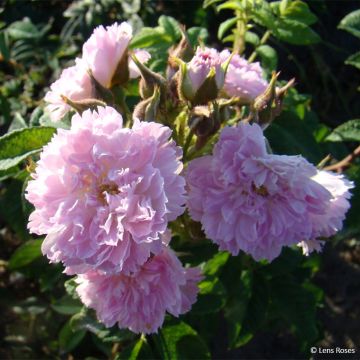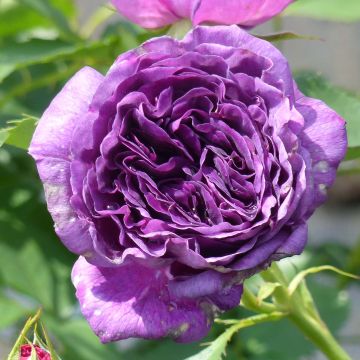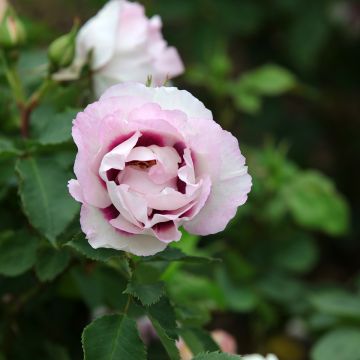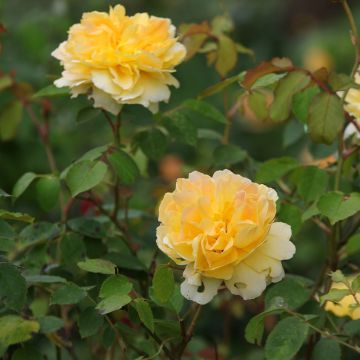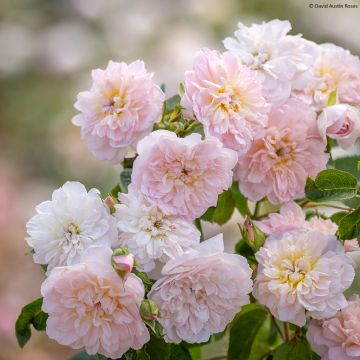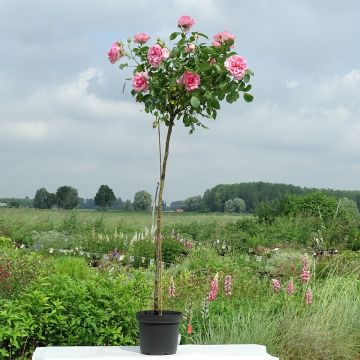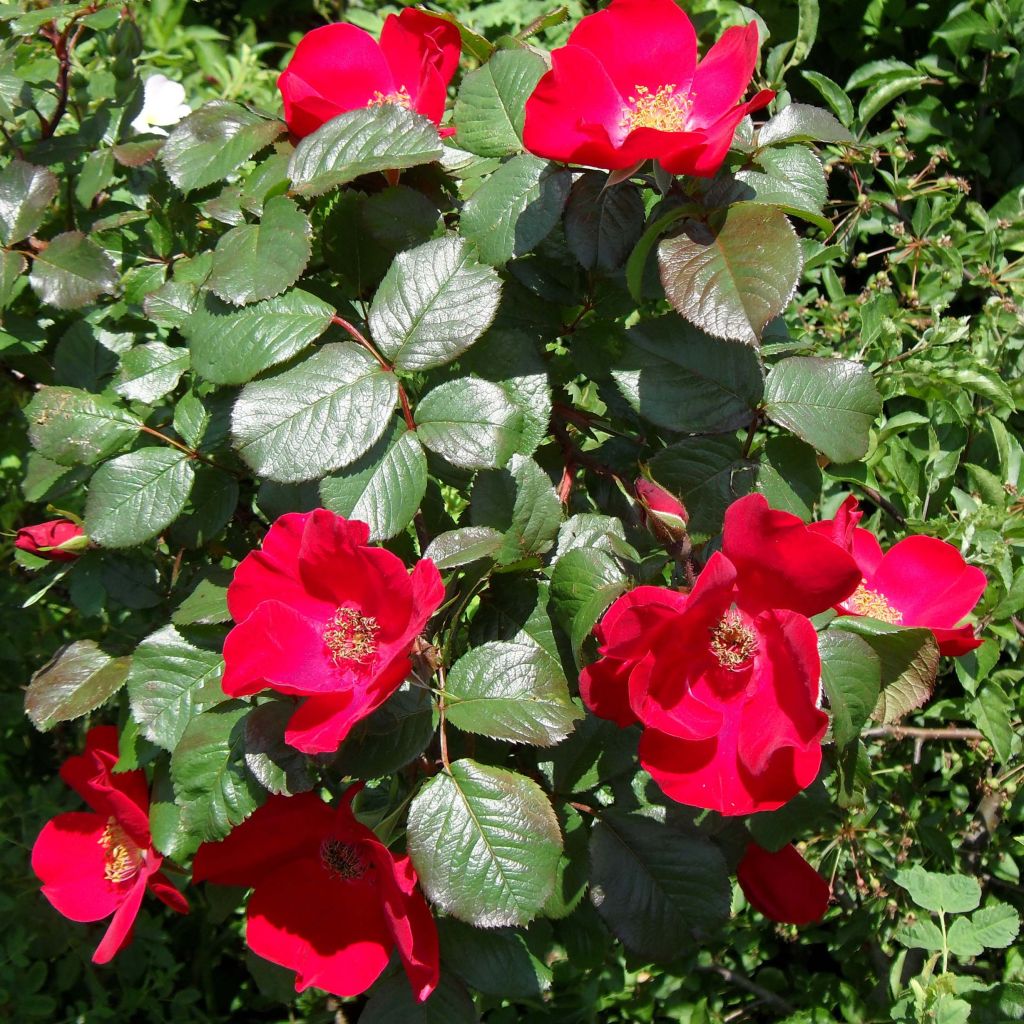

Rosa Robusta - Rugosa rose
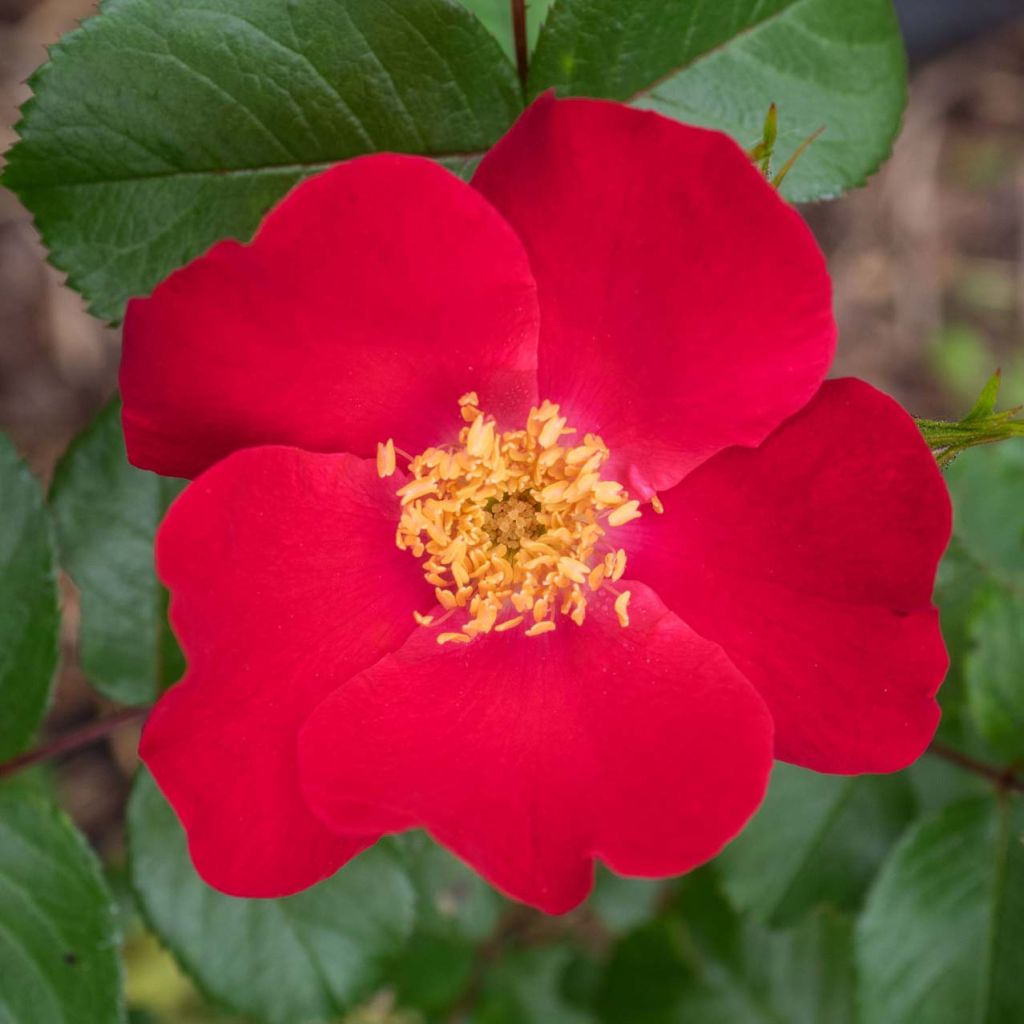

Rosa Robusta - Rugosa rose
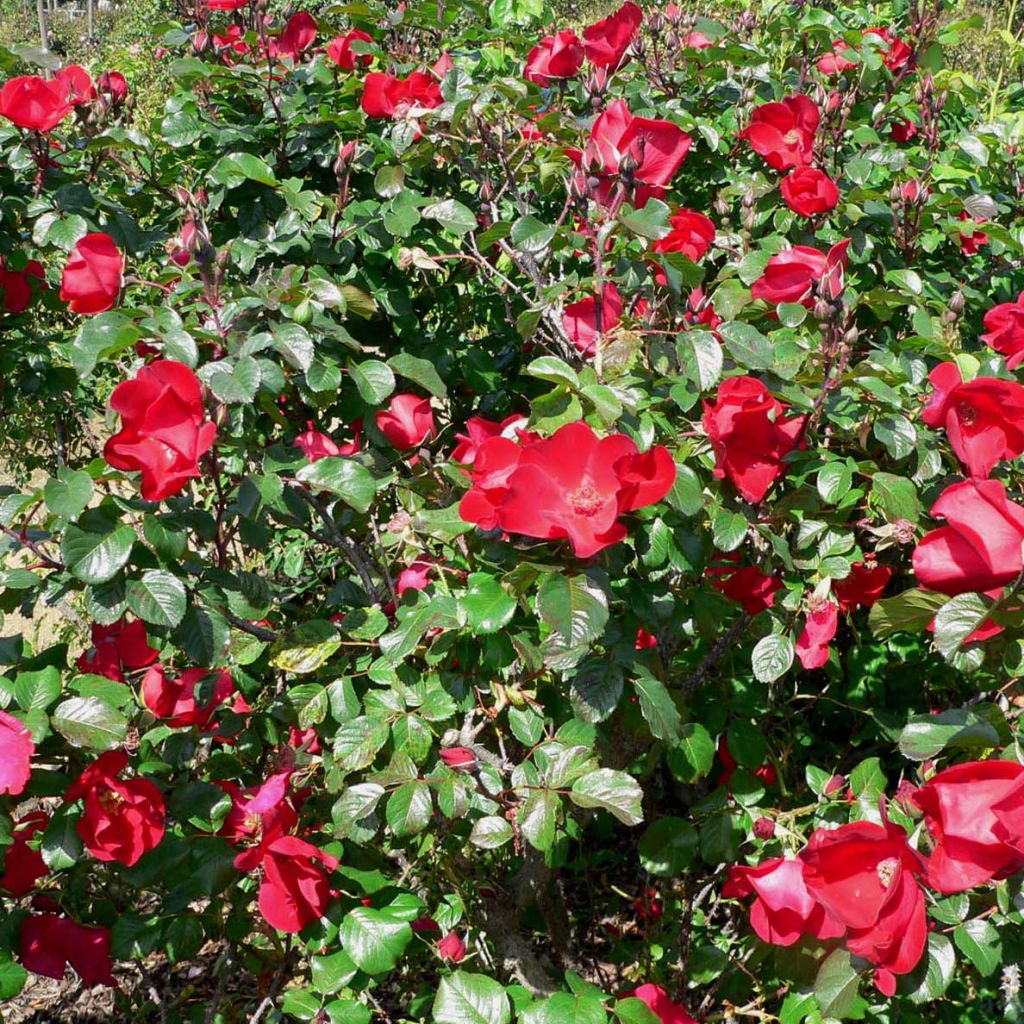

Rosa Robusta - Rugosa rose
Rosa Robusta - Rugosa rose
Rosa x rugosa Robusta® Korgosa
Rosa Rugosa
This item cannot be shipped to the selected country
Delivery charge from €5.90
Delivery charge from €5.90
Delivery to Corse prohibited
More information
Schedule delivery date,
and select date in basket
This plant carries a 24 months recovery warranty
More information
We guarantee the quality of our plants for a full growing cycle, and will replace at our expense any plant that fails to recover under normal climatic and planting conditions.
From €5.90 for pickup delivery and €6.90 for home delivery
Express home delivery from €8.90.
From €5.90 for pickup delivery and €6.90 for home delivery
Express home delivery from €8.90.
Delivery to Corse prohibited: UE law prohibits the import of this plant from mainland France to Corse as part of the fight against Xylella fastidiosa. Please accept our sincere apologies.
More information
Does this plant fit my garden?
Set up your Plantfit profile →
Description
Rosa Robusta is a descendant of the 'Regeliana' rose, from which it has inherited excellent disease resistance and large, simply beautiful red flowers gathered in generous clusters. Its flowers are a magnificent red, almost fluorescent, a colour further enhanced by a pink centre with golden stamens. They bloom throughout the summer on a strong bush which can exceed the size of a man. Wild and brilliant, this low-maintenance rosebush will be perfect in an informal or defensive hedge.
'Robusta', obtained in 1979 by Kordes, comes from a seedling of Rosa rugosa 'Regeliana', a very beautiful subspecies (or hybrid?) of rose, much less known than its cousin Rosa rugosa despite the numerous qualities that the famous German rose breeder has detected and used. This deciduous rosebush grows naturally by the sea in Japan, China, and Siberia, often on sandy dunes, facing the spray, and is well adapted to poor, salty soil, even periodically dry. When it grows on its own roots, it tends to sucker and doesn't like limestone in the soil.
'Robusta' is a very beautiful rose. It forms a bushy, flexible, slightly loose shrub, reaching an average height of 1.40 m (5ft) and width of 1.20 m (4ft), but it can be much larger in fertile and moist soil. It produces numerous thick, sturdy, and thorny stems that bear light green, shiny, healthy leaves divided into 5 to 7 slightly crinkled leaflets. Flowering generally begins in June and continues with varying intensity until August. The flowers are numerous, gathered in magnificent terminal corymbs on vigorous branches. Each one is 10 cm (4in) wide and composed of 5 shiny petals surrounding a pink centre with golden stamens. Their eye-catching colour is similar to poppies, with a touch of magenta pink. The flowers are slightly fragrant and followed by large red hips that can be used to make jams.
Robusta is very hardy, essential in a low-maintenance garden with an easy-going, untamable temperament, absolutely nothing like a polyantha or an ordinary landscape rose. Vigorous and large, it will fit well in an informal or defensive hedge, or a somewhat wild garden, where it will compete with its botanical cousins Rosa rugosa, hugonis, complicata, moyesii, or bracteata to protect your garden and flower beautifully. It can be accompanied by cotinus or euonymus for autumn colour, lilac or mock orange for fragrance in spring, or silver willow and viburnums are also very accommodating. Finally, it is well suited to coastal gardens.
Report an error about the product description
Rosa Robusta - Rugosa rose in pictures
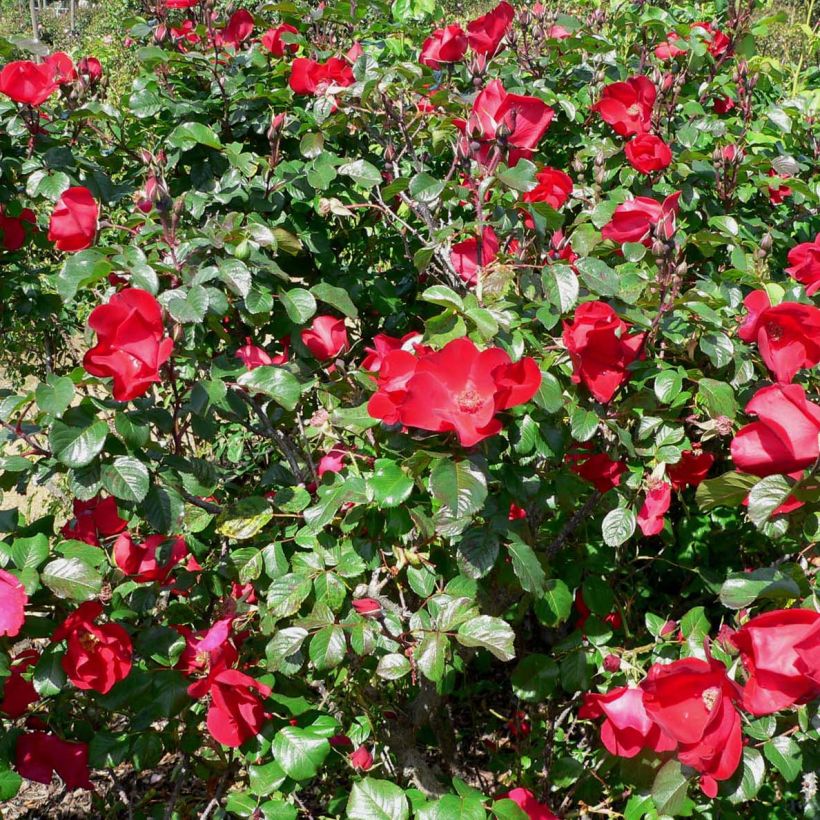

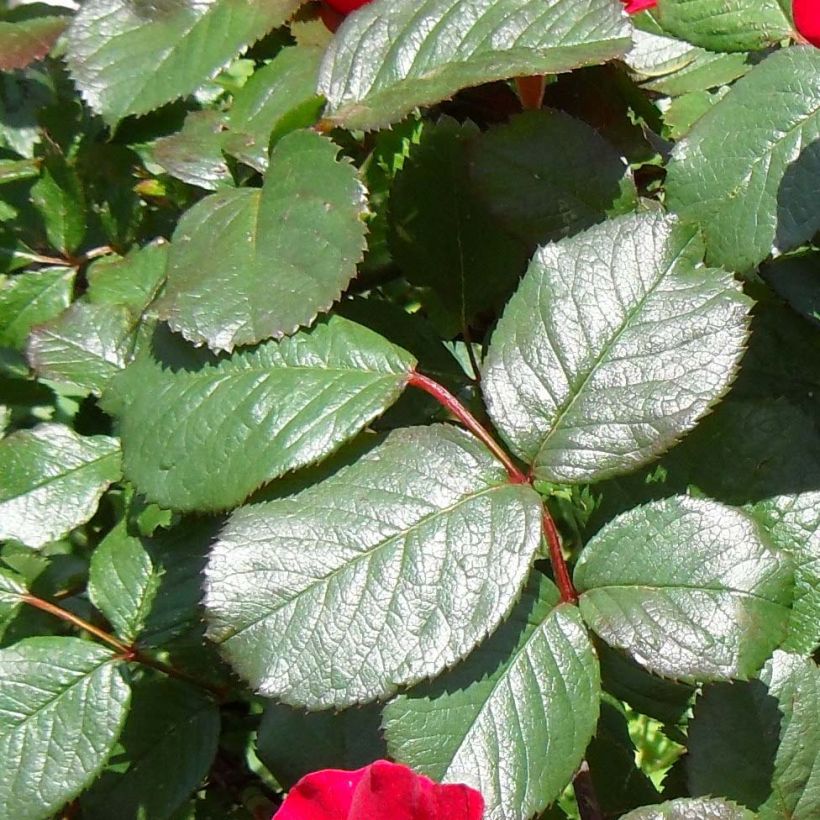

Plant habit
Flowering
Foliage
Botanical data
Rosa
x rugosa
Robusta® Korgosa
Rosaceae
Rosa Rugosa
Cultivar or hybrid
Rosa canina Laxa (Wrapped bare root)
Other Polyantha clustered Roses
Planting and care
Rosa Robusta is undemanding and will thrive in all regions. It is disease-resistant and will tolerate cold, rain and occasionally waterlogged or conversely dry soils. It grows well in all types of soil, as long as it is planted correctly. Plant it in well-worked, fertile and well-drained ordinary soil, and in a sunny or semi-shaded exposure, which it tolerates very well in hot climates. To maintain a bushy shape, remove the oldest branches (2-3 years old) at the end of each winter. This very hardy rose can withstand temperatures as low as -20°C (-4°F). Remove dead wood in winter and deadhead regularly. You can lightly prune if necessary in spring, after the risk of frost. If grown on its own roots, this variety tends to sucker, which further thickens it. A different rootstock will eliminate this natural tendency and allow it to be grown even in limestone soil. To plant your rose in a pot or open ground, work the soil to a depth of 25 cm (10in) and place a base fertiliser such as bonemeal at the bottom of the planting hole. Remove your rose from its pot and position, covering the top of the root ball with 3 cm (1in) of soil, backfill and water well to remove air pockets. In dry weather, water regularly for a few weeks to aid rooting. Provide your rose with special rose fertiliser that stimulates flowering. To obtain abundant flowering from your roses, regularly bend and tie the branches. Each bend leads to a lateral shoot that ends in a cluster of flowers. If you use this technique, you will be rewarded with lots of flowers. Deadhead regularly.
Roses are often stained or unsightly at the end of summer, but this is not a problem for their development. These stains are not harmful to the rose, it is a natural phenomenon.
Planting period
Intended location
Care
This item has not been reviewed yet - be the first to leave a review about it.
Roses by purpose
Haven't found what you were looking for?
Hardiness is the lowest winter temperature a plant can endure without suffering serious damage or even dying. However, hardiness is affected by location (a sheltered area, such as a patio), protection (winter cover) and soil type (hardiness is improved by well-drained soil).

Photo Sharing Terms & Conditions
In order to encourage gardeners to interact and share their experiences, Promesse de fleurs offers various media enabling content to be uploaded onto its Site - in particular via the ‘Photo sharing’ module.
The User agrees to refrain from:
- Posting any content that is illegal, prejudicial, insulting, racist, inciteful to hatred, revisionist, contrary to public decency, that infringes on privacy or on the privacy rights of third parties, in particular the publicity rights of persons and goods, intellectual property rights, or the right to privacy.
- Submitting content on behalf of a third party;
- Impersonate the identity of a third party and/or publish any personal information about a third party;
In general, the User undertakes to refrain from any unethical behaviour.
All Content (in particular text, comments, files, images, photos, videos, creative works, etc.), which may be subject to property or intellectual property rights, image or other private rights, shall remain the property of the User, subject to the limited rights granted by the terms of the licence granted by Promesse de fleurs as stated below. Users are at liberty to publish or not to publish such Content on the Site, notably via the ‘Photo Sharing’ facility, and accept that this Content shall be made public and freely accessible, notably on the Internet.
Users further acknowledge, undertake to have ,and guarantee that they hold all necessary rights and permissions to publish such material on the Site, in particular with regard to the legislation in force pertaining to any privacy, property, intellectual property, image, or contractual rights, or rights of any other nature. By publishing such Content on the Site, Users acknowledge accepting full liability as publishers of the Content within the meaning of the law, and grant Promesse de fleurs, free of charge, an inclusive, worldwide licence for the said Content for the entire duration of its publication, including all reproduction, representation, up/downloading, displaying, performing, transmission, and storage rights.
Users also grant permission for their name to be linked to the Content and accept that this link may not always be made available.
By engaging in posting material, Users consent to their Content becoming automatically accessible on the Internet, in particular on other sites and/or blogs and/or web pages of the Promesse de fleurs site, including in particular social pages and the Promesse de fleurs catalogue.
Users may secure the removal of entrusted content free of charge by issuing a simple request via our contact form.
The flowering period indicated on our website applies to countries and regions located in USDA zone 8 (France, the United Kingdom, Ireland, the Netherlands, etc.)
It will vary according to where you live:
- In zones 9 to 10 (Italy, Spain, Greece, etc.), flowering will occur about 2 to 4 weeks earlier.
- In zones 6 to 7 (Germany, Poland, Slovenia, and lower mountainous regions), flowering will be delayed by 2 to 3 weeks.
- In zone 5 (Central Europe, Scandinavia), blooming will be delayed by 3 to 5 weeks.
In temperate climates, pruning of spring-flowering shrubs (forsythia, spireas, etc.) should be done just after flowering.
Pruning of summer-flowering shrubs (Indian Lilac, Perovskia, etc.) can be done in winter or spring.
In cold regions as well as with frost-sensitive plants, avoid pruning too early when severe frosts may still occur.
The planting period indicated on our website applies to countries and regions located in USDA zone 8 (France, United Kingdom, Ireland, Netherlands).
It will vary according to where you live:
- In Mediterranean zones (Marseille, Madrid, Milan, etc.), autumn and winter are the best planting periods.
- In continental zones (Strasbourg, Munich, Vienna, etc.), delay planting by 2 to 3 weeks in spring and bring it forward by 2 to 4 weeks in autumn.
- In mountainous regions (the Alps, Pyrenees, Carpathians, etc.), it is best to plant in late spring (May-June) or late summer (August-September).
The harvesting period indicated on our website applies to countries and regions in USDA zone 8 (France, England, Ireland, the Netherlands).
In colder areas (Scandinavia, Poland, Austria...) fruit and vegetable harvests are likely to be delayed by 3-4 weeks.
In warmer areas (Italy, Spain, Greece, etc.), harvesting will probably take place earlier, depending on weather conditions.
The sowing periods indicated on our website apply to countries and regions within USDA Zone 8 (France, UK, Ireland, Netherlands).
In colder areas (Scandinavia, Poland, Austria...), delay any outdoor sowing by 3-4 weeks, or sow under glass.
In warmer climes (Italy, Spain, Greece, etc.), bring outdoor sowing forward by a few weeks.





































